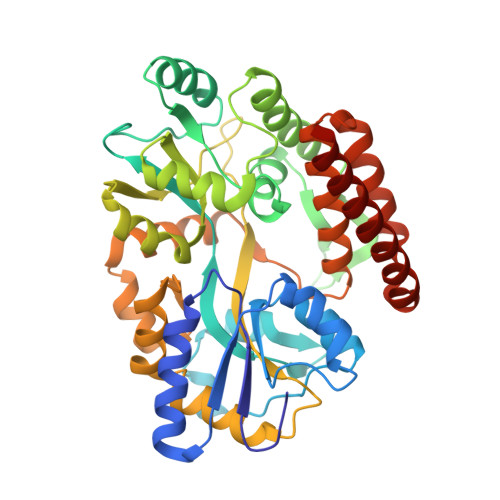Oligomeric Properties of Survival Motor NeuronGemin2 Complexes.
Gupta, K., Martin, R., Sharp, R., Sarachan, K.L., Ninan, N.S., Van Duyne, G.D.(2015) J Biol Chem 290: 20185-20199
- PubMed: 26092730
- DOI: https://doi.org/10.1074/jbc.M115.667279
- Primary Citation of Related Structures:
4RG5 - PubMed Abstract:
The survival motor neuron (SMN) protein forms the oligomeric core of a multiprotein complex required for the assembly of spliceosomal small nuclear ribonucleoproteins. Deletions and mutations in the SMN1 gene are associated with spinal muscular atrophy (SMA), a devastating neurodegenerative disease that is the leading heritable cause of infant mortality. Oligomerization of SMN is required for its function, and some SMA patient mutations disrupt the ability of SMN to self-associate. Here, we investigate the oligomeric nature of the SMN·Gemin2 complexes from humans and fission yeast (hSMN·Gemin2 and ySMN·Gemin2). We find that hSMN·Gemin2 forms oligomers spanning the dimer to octamer range. The YG box oligomerization domain of SMN is both necessary and sufficient to form these oligomers. ySMN·Gemin2 exists as a dimer-tetramer equilibrium with Kd = 1.0 ± 0.9 μM. A 1.9 Å crystal structure of the ySMN YG box confirms a high level of structural conservation with the human ortholog in this important region of SMN. Disulfide cross-linking experiments indicate that SMN tetramers are formed by self-association of stable, non-dissociating dimers. Thus, SMN tetramers do not form symmetric helical bundles such as those found in glycine zipper transmembrane oligomers. The dimer-tetramer nature of SMN complexes and the dimer of dimers organization of the SMN tetramer provide an important foundation for ongoing studies to understand the mechanism of SMN-assisted small nuclear ribonucleoprotein assembly and the underlying causes of SMA.
Organizational Affiliation:
From the Department of Biochemistry and Biophysics and.


















